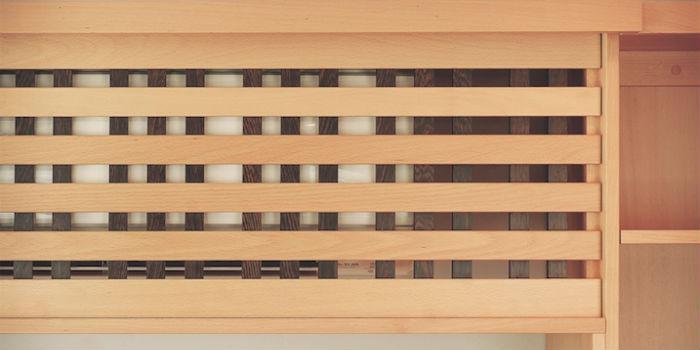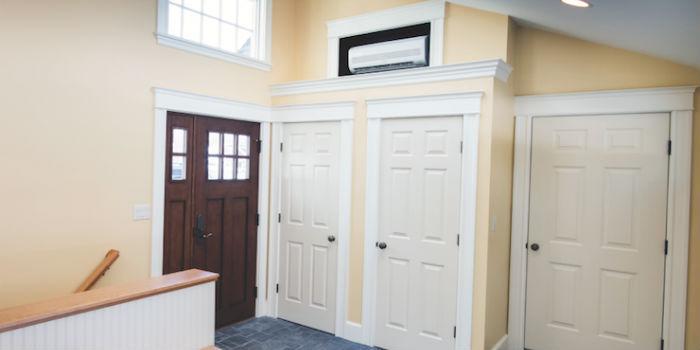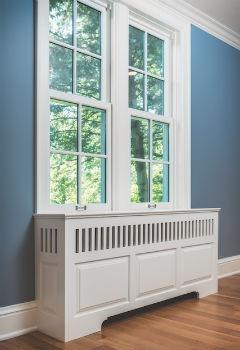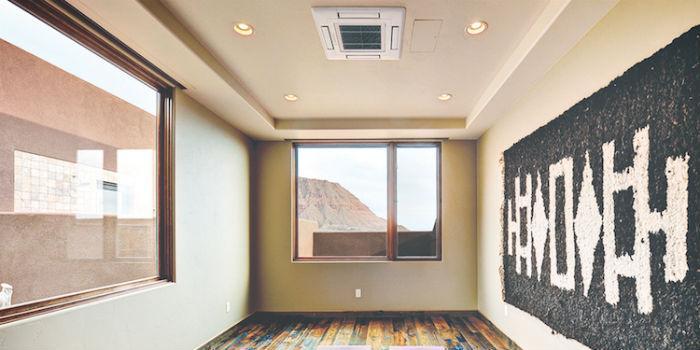 These heating/cooling systems do not always harmonize with the rest of the room. Here are five ways to disguise them or hide them altogether.
These heating/cooling systems do not always harmonize with the rest of the room. Here are five ways to disguise them or hide them altogether.
by Dan Morrison*
Mini-splits solve many problems. In homes with little space and good insulation, they provide just the level of heat and cooling enough in a compact package and at a reasonable cost. But it takes some time to get used to them when they're stuck there on the wall somewhere.
To show you more aesthetically pleasing solutions, we looked for examples online and also consulted with architects and energy aficionados we know and asked them to give us examples of projects they have been involved in. The solutions we got range from the simplest to the most inspiring. But before we get into the details, here are a couple of things you should keep in mind:
• Make sure filters can be accessed for cleaning
• Do not install them on top of any electronic device, due to the possibility of condensation
Cover it on a recessed shelf

There are a large number of examples of this type of solution in Houzz.com. This one (the main image above) was designed by Mary Bokovoy of Hood River reDesign in Portland, Oregon. "I designed the shelf to fill the wall, matching the height of the kitchen cabinets," Explains Bokovoy. "The sofa was purchased in advance, so we were able to design a flat panel inserted directly behind it to fit perfectly." This design is a display of great skill and offers an elegant solution that allows good airflow and plenty of storage space.
Build a built-in niche

This solution came from Steve Baczek, an architect who incorporates Mini-split in many of the passive houses he designs (a type of housing created to maintain the ideal atmospheric conditions inside achieving energy savings ranging between 70% and 90% compared to a conventional home). "In a house I recently designed, an engineer told me I could recess the Mini-split into a cavity, as long as there was 3-inch clearance on all four sides," Baczek said. Then, in another house, with a split team from another manufacturer, an engineer told us we should never embed them. Now I'm afraid to ask anyone else." Contrary to that opinion, Baczek specified a Mini-split recessed above a closet in the lobby of a house and, according to what he tells us, it has been working without problems.
Place it in a corner

If your engineer is not comfortable embedding the Mini-split, there is always the option of placing it in a high place, in a corner of the room, where it does not attract attention, as Baczek did in the picture. He says he also installed a Mini-split near the roof, below a step of a ladder, and that it has been working well for a couple of years. "Keep in mind that you need some method of distribution for air conditioning to enter the rooms," he says. "I usually use an ERV (ventilation with energy recovery) to circulate the air."
Build a cabinet around it

Not all Mini-splits are installed on the wall, some are located on the floor. "If you use a Multi-Port Mr. Slim system from Mitsubishi," Marc Rosenbaum, an energy engineer at South Mountain Company, a design and construction firm located on Martha's Vineyard, told us, "these systems have a nice floor unit that can be recessed." Rosenbaum also says floor units cost more than wall units.
By mounting the system on the ground, an old radiator cover, like the one in the picture, becomes a very twenty-first century solution to a twentieth-century problem.
Put it on the ceiling

Rosenbum also told us about the Mini-split option that are mounted on 2 x 2 roof systems. "I haven't used cassette-like systems," he warns, "and I've only seen one installed in a house. But it's an option worth considering."
* Item supplied by Mitsubishi Electric. Originally published in www.proremodeler.com














